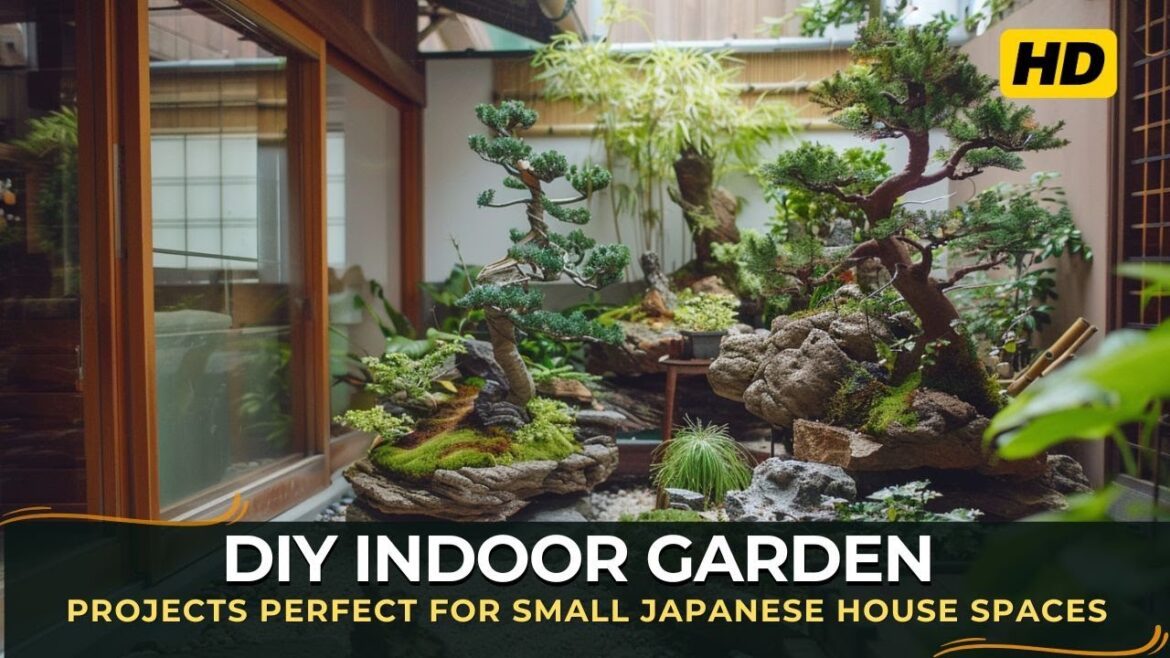Creating an indoor garden in a small Japanese house is an excellent way to bring nature indoors, enhance your living space, and enjoy the benefits of gardening. Whether you have limited space or simply want to add a touch of greenery to your home, these DIY indoor garden projects are perfect for you. Let’s explore some creative and space-efficient ideas to transform your small Japanese house into a green oasis.
Benefits of Indoor Gardening
1. Improves Air Quality
– **Natural Air Purification**: Plants absorb carbon dioxide and release oxygen, improving indoor air quality.
– **Removes Toxins**: Certain plants can filter harmful pollutants from the air.
2. Enhances Mental Wellbeing
– **Stress Reduction**: Gardening has been shown to reduce stress and promote relaxation.
– **Boosts Mood**: The presence of plants can enhance your mood and overall sense of wellbeing.
3. Adds Aesthetic Appeal
– **Visual Interest**: Indoor gardens add beauty and visual interest to your living space.
– **Personalized Decor**: Customize your indoor garden to reflect your style and preferences.
DIY Indoor Garden Projects
1. Vertical Wall Garden
Benefits
– **Space-Saving**: Utilizes vertical space, making it ideal for small homes.
– **Eye-Catching Display**: Creates a striking visual focal point.
How to Create
– **Materials Needed**: Wooden pallets, pots, soil, plants, mounting hardware.
– **Steps**:
1. Secure the wooden pallet to the wall using mounting hardware.
2. Attach pots to the pallet using hooks or brackets.
3. Fill the pots with soil and plant your chosen greenery.
4. Water the plants and ensure they receive adequate light.
2. Hanging Herb Garden
Benefits
– **Convenient Access**: Keeps fresh herbs within easy reach for cooking.
– **Maximizes Space**: Perfect for utilizing overhead space.
How to Create
– **Materials Needed**: Hanging planters, hooks, herb plants, soil.
– **Steps**:
1. Install hooks in the ceiling where you want to hang the planters.
2. Fill the hanging planters with soil and plant your herbs.
3. Hang the planters from the hooks.
4. Water the herbs regularly and place them near a light source.
3. Indoor Terrarium
Benefits
– **Low Maintenance**: Requires minimal care and is suitable for beginners.
– **Decorative**: Adds a unique and decorative element to your home.
How to Create
– **Materials Needed**: Glass containers, pebbles, activated charcoal, potting soil, small plants (succulents, ferns).
– **Steps**:
1. Add a layer of pebbles to the bottom of the glass container for drainage.
2. Add a thin layer of activated charcoal to keep the soil fresh.
3. Add a layer of potting soil.
4. Plant your chosen greenery in the soil.
5. Place the terrarium in a well-lit area, avoiding direct sunlight.
4. Window Sill Garden
Benefits
– **Natural Light**: Takes advantage of natural light from windows.
– **Easy Access**: Ideal for small plants and herbs.
How to Create
– **Materials Needed**: Window boxes or small pots, soil, plants.
– **Steps**:
1. Choose a window with good sunlight exposure.
2. Place window boxes or small pots on the sill.
3. Fill with soil and plant your chosen greenery.
4. Water the plants regularly and rotate them for even light exposure.
5. Repurposed Container Garden
Benefits
– **Eco-Friendly**: Reuses old containers, reducing waste.
– **Customizable**: Use various container sizes and shapes for a unique look.
How to Create
– **Materials Needed**: Old containers (tea tins, mason jars, bottles), soil, plants.
– **Steps**:
1. Clean and prepare the containers by making drainage holes if needed.
2. Fill the containers with soil.
3. Plant your chosen greenery.
4. Arrange the containers in your desired layout and place them in a well-lit area.
Choosing the Right Plants
1. Low Light Plants
– **Examples**: Snake plant, pothos, ZZ plant.
– **Benefits**: Thrive in low light conditions, perfect for areas with limited natural light.
2. Medium Light Plants
– **Examples**: Spider plant, philodendron, peace lily.
– **Benefits**: Adaptable to various light conditions, suitable for most indoor spaces.
3. High Light Plants
– **Examples**: Succulents, cacti, herbs.
– **Benefits**: Require direct sunlight, ideal for windowsills and bright areas.
Conclusion
Creating an indoor garden in your small Japanese house is a rewarding project that brings numerous benefits, from improving air quality to enhancing your home’s aesthetic appeal. By choosing the right plants and utilizing creative DIY projects like vertical wall gardens, hanging herb gardens, indoor terrariums, window sill gardens, and repurposed container gardens, you can transform your living space into a green oasis. Embrace the joy of indoor gardening and enjoy the beauty and tranquility it brings to your home.

